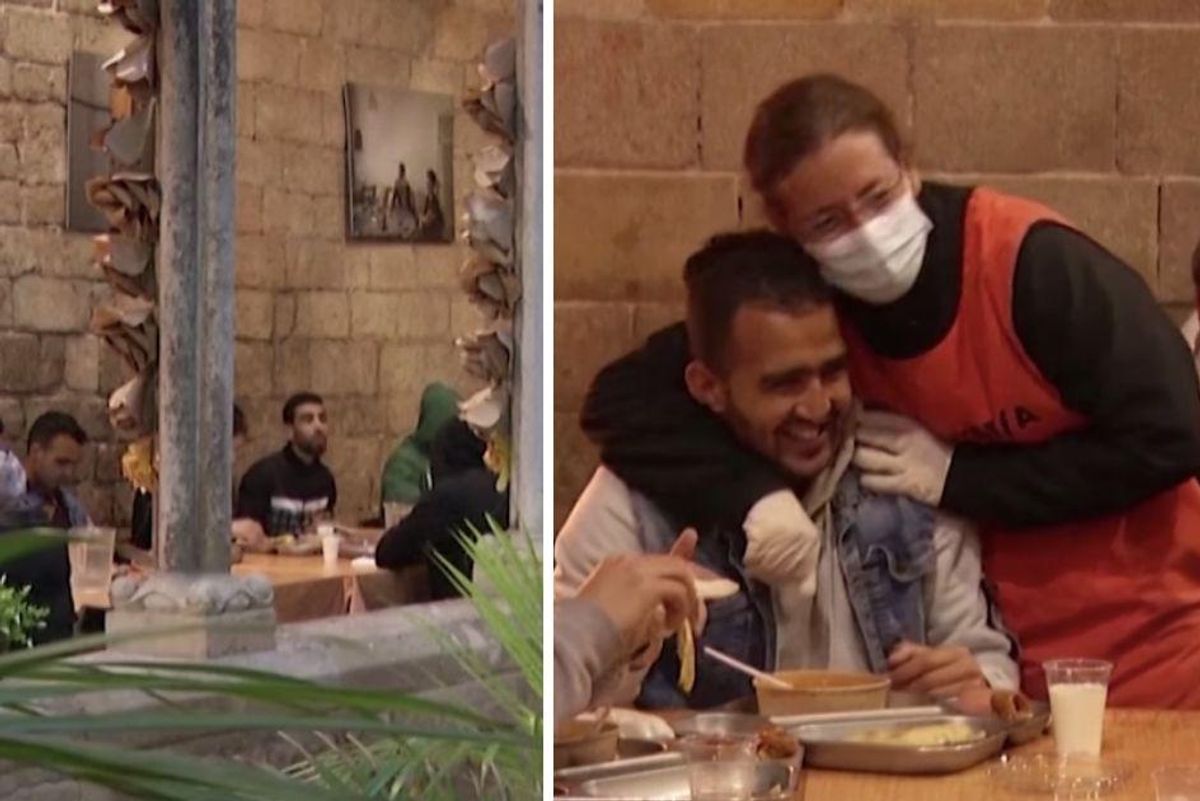Catholic rector offers open-air church for Muslims to break Ramadan fast together safely

The fasting period of Ramadan observed by Muslims around the world is a both an individual and communal observance. For the individual, it's a time to grow closer to God through sacrifice and detachment from physical desires. For the community, it's a time to gather in joy and fellowship at sunset, breaking bread together after abstaining from food and drink since sunrise.
The COVID-19 pandemic has limited group gatherings in many countries, putting a damper on the communal part of Ramadan. But for one community in Barcelona, Spain, a different faith has stepped up to make the after sunset meal, known as Iftar, as safe as possible for the Muslim community.
According to Reuters, Father Peio Sanchez, Santa Anna's rector, has opened the doors of the Catholic church's open-air cloisters to local Muslims to use for breaking the Ramadan fast. He sees the different faiths coming together as a symbol of civic coexistence.
Every evening, volunteers serve a home-cooked Iftar dinner to between 50 and 60 Muslims, many of them homeless, in the open-air stone passages of Santa Anna Church.
The space was secured by Faouzia Chati, president of the Catalan Association of Moroccan Women. She was seeking a venue for Muslims to gather to eat and pray, and Father Sanchez provided a welcoming
"People are very happy that Muslims can do Iftar in a Catholic church, because religions serve to unite us, not to separate us," Chati told Reuters.
Father Sanchez's commentary on the cooperation between the two faith communities illustrates what's possible. "Even with different cultures, different languages, different religions, we are more capable of sitting down and talking than some politicians," he said.
Hafid Oubrahim, a 27-year old Moroccan who attends the dinners concurred. "We are all the same... If you are Catholic or of another religion and I am Muslim, that's fine. We are all like brothers and we must help each other too."
While there is no shortage of conflict between religious groups—in addition to conflict within religious groups—we have countless examples of interfaith cooperation that offer a vision of religion as a source of unity. Every major religion has its version of The Golden Rule, which presumably extends to people of all faiths, not just one's own. Treating others the way we'd like to be treated is exactly what we see when we see stories like this. A Catholic leader offering a safe space for people to gather and worship, which is undoubtedly what he would want if his congregation were in the same boat. Muslim adherents expressing gratitude for the gracious offer, which is undoubtedly what they would appreciate happening if they made a similar offer. What a lovely example of the Golen Rule in action.
Religion can be used as an excuse for discord and disunity, but it doesn't have to be. When we look for shared values and seek to build bridges instead of walls, religion can be a tool that brings people together—even people with diverse beliefs and practices.
Whether it's offering a space for worship or fellowship, offering holiday greetings to people of other faiths, or even offering your body as a shield for people under threat for their religious affiliation, we can each be good neighbors to one another regardless of our spiritual traditions. Especially in a time when we are all experiencing a global pandemic that has made gathering in communities harder than usual and reminded us of how interconnected we truly are.
When we practice the most basic universal teaching of all faiths—treat others the way we ourselves would want to be treated—we create the world we all want to live in. Thank you, Father Sanchez and the Muslim community you're serving, for the beautiful reminder.
- Muslims have contributed to America since its founding. Here's how ... ›
- 100-year-old Muslim man raises 207,000 for COVID-19 victims by ... ›
- How Christians are using their lawns to support their Muslim ... ›
- Mark Wahlberg explains his Catholic faith - Upworthy ›
- Video explains career path to becoming pope in 5 minutes - Upworthy ›

